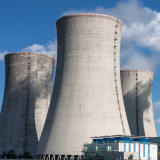
Asian spot LNG prices continue to slide on tepid demand and ample supplies, dipping below the psychological threshold of $10/MMBtu and defying general historical patterns of heightened levels during the northern hemisphere winter season when demand for the super-chilled fuel typically spikes.
An LNG cargo changed hands between Chinese state-owned PetroChina and Shell at $9.60/MMBtu today (9 January), with the former buying the Oman-sourced cargo from the latter. It will be delivered on 10-12 February to the Japan, South Korea, Taiwan and China (JKTC) region.
The deal represents the first sub-$10/MMBtu transaction in a while. One of the most recent deals to be concluded on a fixed-price basis was $1.75/MMBtu higher at $11.35/MMBtu on 4 January, involving a sale from PetroChina to BP of a 21-23 February delivery to the PipeChina Tianjin terminal in China.
The front-month price of the Platts Japan/Korea Marker (JKM) has been hovering in the $10-20/MMBtu range in past months, with it last in the sub-$10/MMBtu level on 13 June 2023 at $9.744/MMBtu.
High LNG inventories in Japan and South Korea on the back of mild weather have curbed demand and limited spot interest, putting pressure on prices at a time when there is no shortage of cargoes. Global liquefaction capacity remains largely healthy, with no major large-scale shutdown or disruption putting a squeeze on supplies.
A bout of cold weather in mid-December last year in China had drawn down inventories and encouraged some second-tier buyers’ purchase from the market, particularly since prices at the time in the low teens were considered sufficiently low and attractive to some of them. Market participants expect the same to happen this time – that Chinese buyers will emerge opportunistically for cargoes at current price levels and lend support, limiting any further downside.
Whether or not that materialises also depends on how long Japanese and South Korean buyers stay away from the market, which will in large part depend on weather conditions in the coming months. Current forecasts are suggesting that warm weather will likely be there to stay in the near future, limiting the use of LNG for heating in those countries.
The Japan Meteorological Agency (JMA) on 4 January predicted a 40-50% probability of above-normal temperatures versus a 20% chance of below-normal temperatures in northern and southern Japan, and a 60-70% probability of above-normal temperatures versus a 10% chance of below-normal temperatures in the country’s central regions.
The Korea Meteorological Administration (KMA) also predicted on 4 January a 40% probability each of normal and above-normal temperatures in South Korea from 15-21 January and 22-28 January, versus just a 20% chance of below-normal temperatures in both periods.
By Joey Chua, Market and Data Analyst, LNG, SSY
Articles
You may also be
interested in
View allGet in touch
Contact us today to find out how our expert team can support your business















